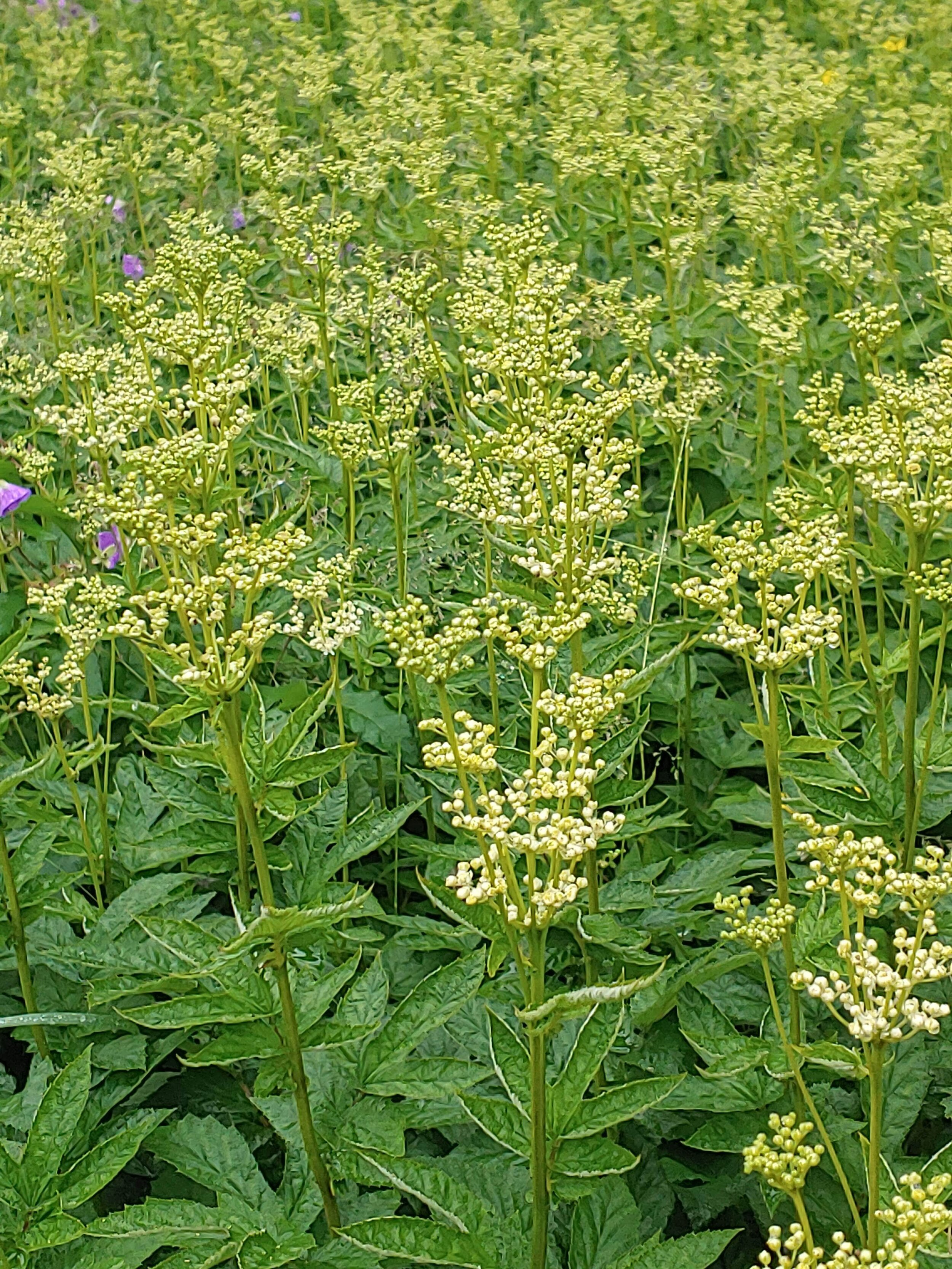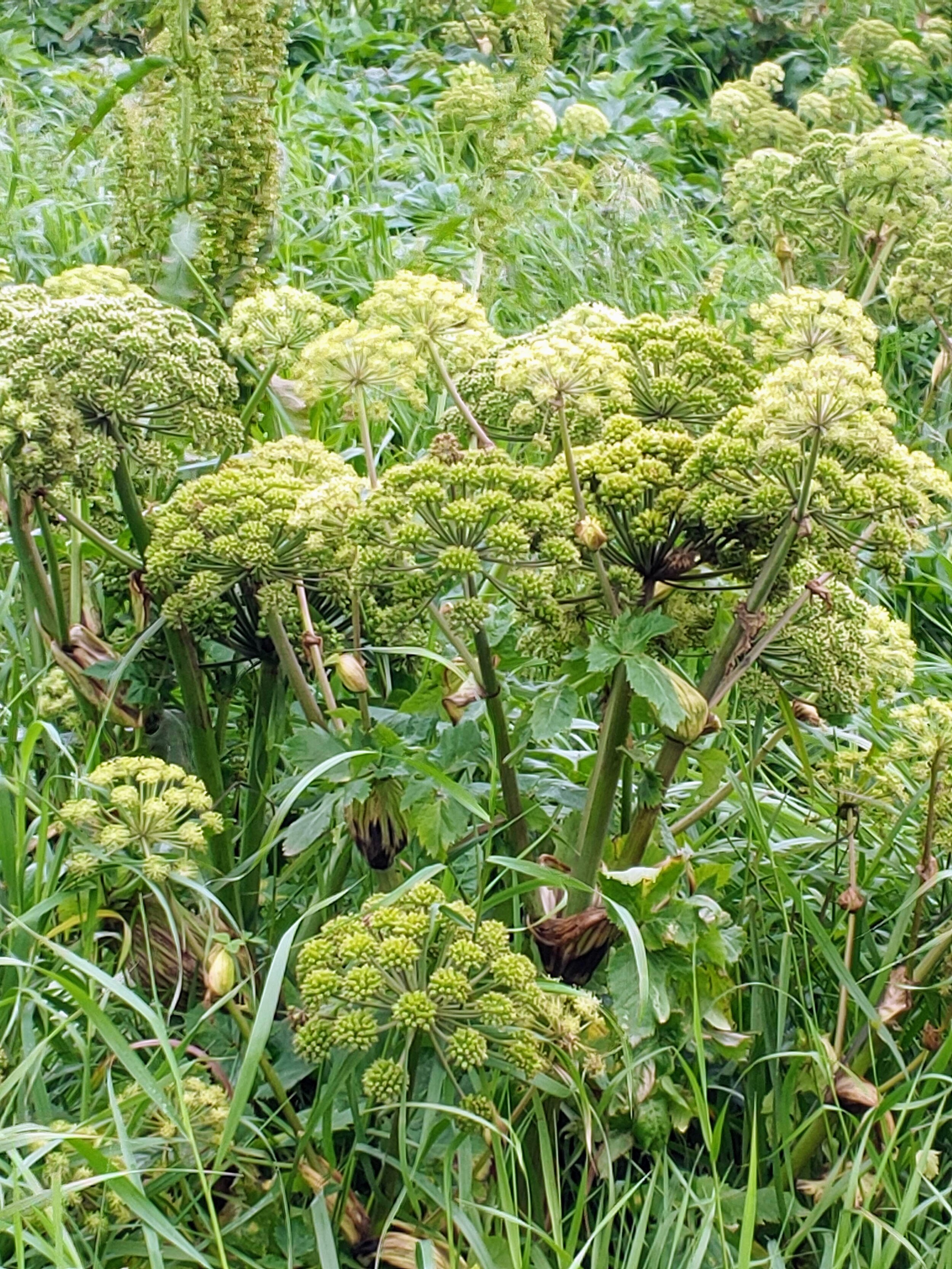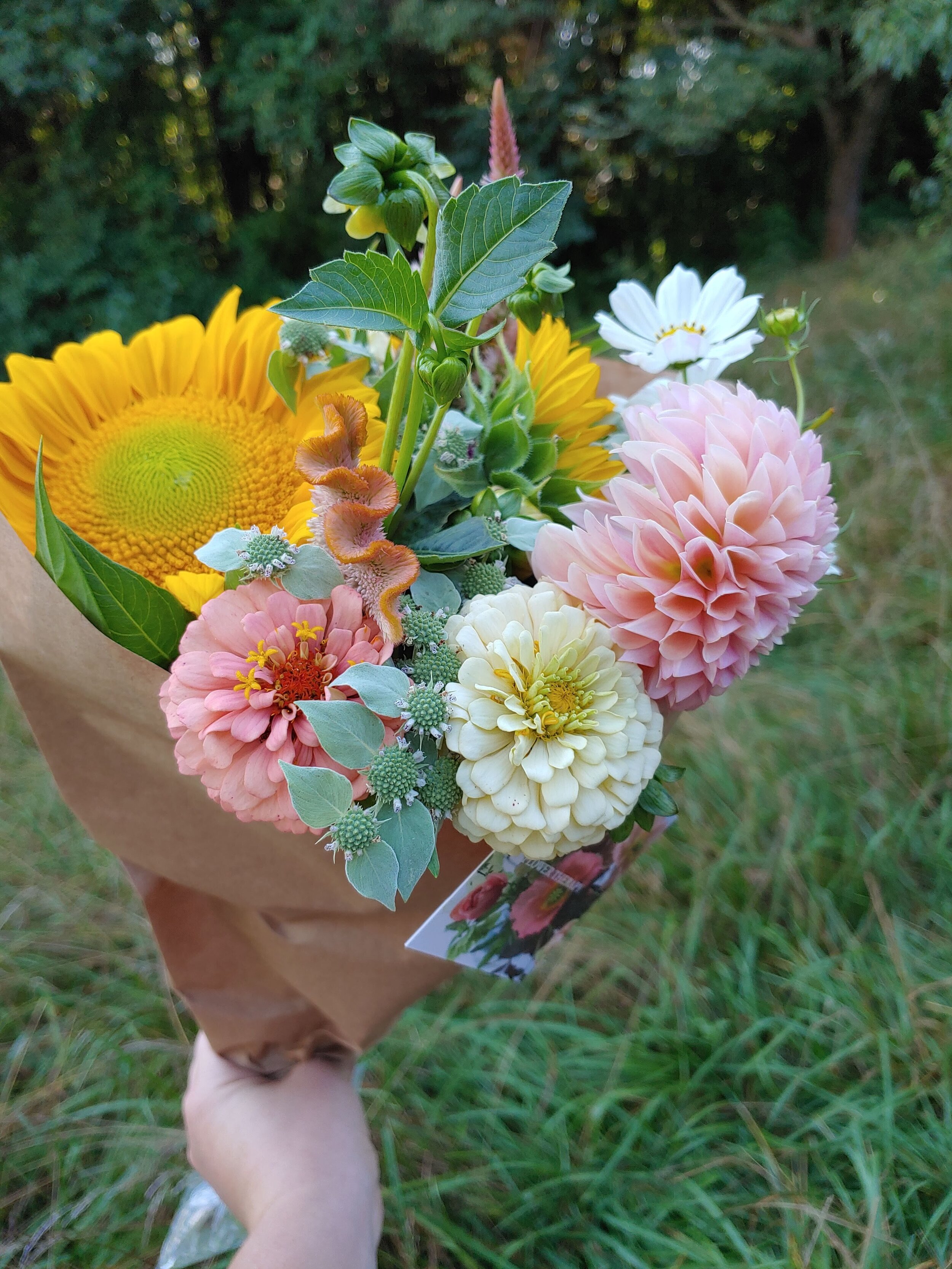
Icelandic Flora
A few days into our trip, we visited the Grasagarður Reykjavíkur (Reykjavik Botanical Garden). It was definitely a highlight of the trip for me. Weather in Iceland in July is like perpetual spring. It feels like our March weather. I loved it! I highly recommend visiting Northern countries in the middle of the summer- great way to beat the heat!
My favorite part of the botanical garden was called the Systemic Garden. The understanding I eventually came too (b/c remember a lot of stuff is written in Icelandic) was that this was a test garden of sorts. It contained multiple varieties of each species planted in the garden. The plants were in raised stone beds with stone dividers.
I had the chance to see so many plants that I dream of growing but I know won’t make it in our hot climate. But the best of all was the Blue Poppy!
I’ve loaded up a gallery below of some of my favorites. If you hover over the photo, you can see the name.
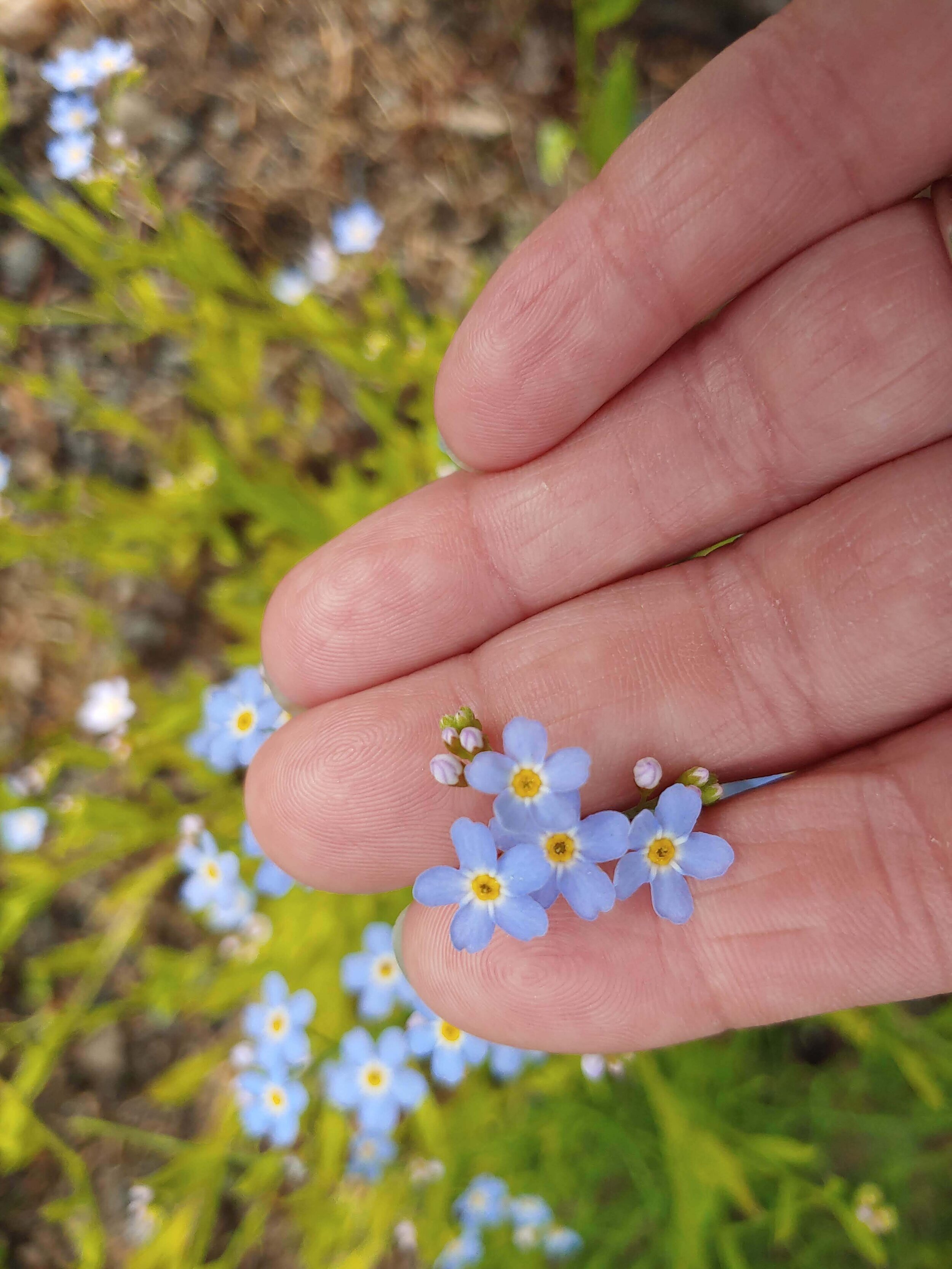





The wild flora was fascinating too. Back in the 1940’s lupines were brought in to increase soil stabilization. They appear to have done their job a little too well and now are taking over some of the native flora. We arrived at the tail end of their bloom. They were all over the roadsides during our travels through the southern part of Iceland.
The northern part of the country had a higher population of wild Angelica and some type of filipendula.
The landscaping around the towns and homes was beautiful but surprising to me. It was an odd juxtaposition of plants. You would have a large planter bowl full of calendula, snapdragons, grasses and then a Dahlia! So lots of cool season plants and a warm season focal!
Also they like to use spirea, alchemilla, and snowberry as foundation shrubs in front of their houses or for hedges in the backyards. Can you imagine a hedge of spirea in July? All of these were blooming in late July.
Lilac was very common too (and it was in bloom). Think of it this way- what if someone swapped out all our crepe myrtles for lilacs? Their lilacs weren’t bushes— they were trees! (This would be an improvement in my opinion)
Iceland is a fascinating country. I feel like we took a geological tour for our vacation. I’ve included a gallery of some other things we saw below in case you missed when I posted them in my Instagram stories.



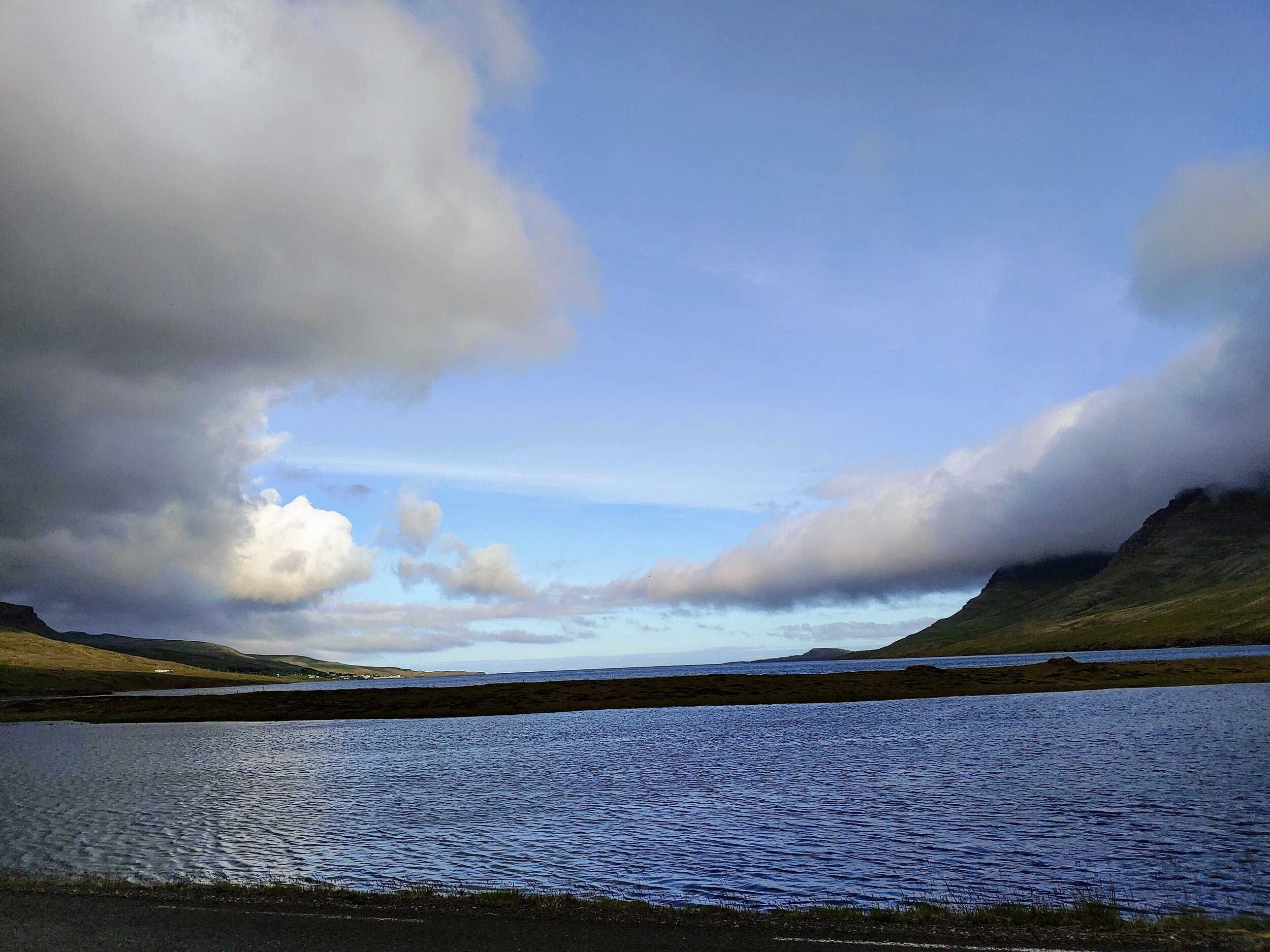







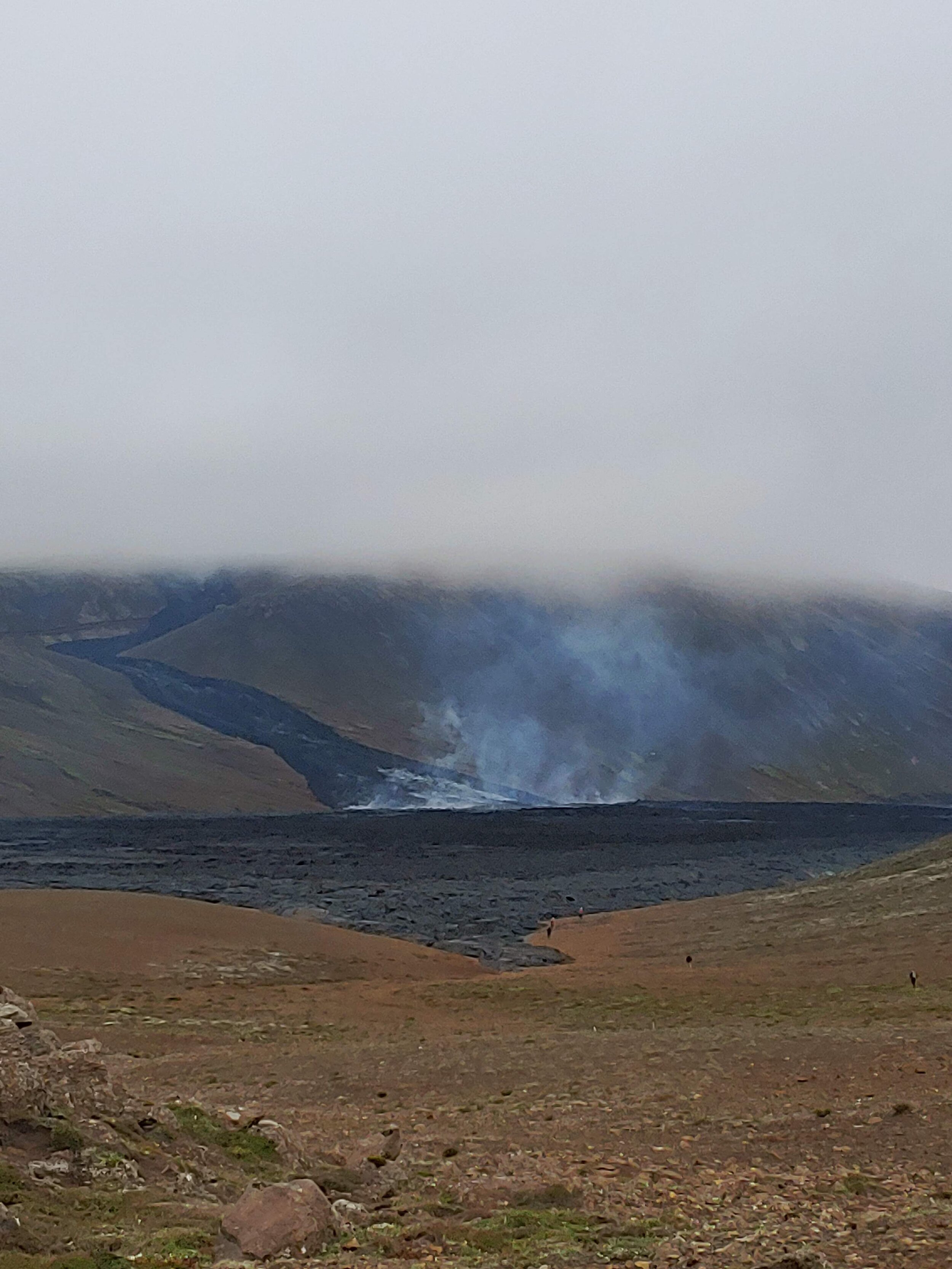
What to Plant and When
It’s definitely time to plan what you are going to grow for the summer garden. I picked my top 5 favorites in each category: flowers, vegetables and herbs.
Flowers:
I like easy flowers that produce loads of blooms! These types are called cut and come again in the farming biz. This means that when you cut the flower, it will produce another and so on and so on. You can plant multiple successions of these crops if you like. Flower farmers do this because we like to change up the colors. Also it protects us against disease- we know we have another crop waiting if one goes down. Lastly, production farming asks a lot of plant so we cut off of them for 4 weeks or so and then start cutting from the next one so we don’t tax the plants. However, the home gardener may be just fine with one crop all summer and fall. Or you may decide you want pastels in early summer but bright rich orange and pinks in the fall. So without further adieu:
1. Zinnias- These are the staple of most cut flower gardens but especially here in the South. Zinnias love our hot weather and take it like a champ! I particularly like the Oklahoma varieties. They are smaller in size but have the best colors in my opinion. However, if big blooms spark your interest, then try the Benary series. Benary zinnias may cost a bit more but they are bred to be more disease resistant.
- Planting/Growing: Direct seed once the soil has warmed (late April here in the Upstate). Space 9-12” apart. If you live in a windy area, stake or net your plants once they get 12-18” tall. Cut the blooms when the stem is strong and stiff — when the flower doesn’t wobble at the end of the stem when you shake it. Cut long stems, especially at first (around the length of your arm). This seems like you are taking off half the plant at first but a really deep cut will cause the plant to branch and also keeps the height manageable. The more your cut zinnias, the more they bloom!
2. Cosmos- I couldn’t imagine a summer without cosmos. They flutter in the breeze like butterflies! They are one of my top 3 favorite summer blooms (right there along with dahlias and celosia). Cosmos come in shades of white, pink, red, orange and yellow. They also come in shorter heights (Sonata series) which are great for the landscape - 2’ high. Also you can get the taller cutting types such as the Double click series or my favorites, the Sensation series — they live up to their name! I’m a classic white cosmos girl- I love Sensation Purity- my fav! The Versailles series is worth it too for some of the darker colors and interesting variegated varieties.
- Planting and Growing- Exactly like Zinnias so see above. Harvesting is different though. You’ll still want to harvest a long stem but for best vase life, harvest when you see the first petal crack from the bud for the single petal types. For the double click series, harvest when they are about 1/3 open. The flowers will continue to open in the vase and get bigger and bigger. Harvesting this way gets the blooms before the bees pollinate them and ensure you get a week worth’s of vase life. If the pollen has begun to get dusty in the center, then the bloom has gone way past it’s optimal point and won’t last more than 2 days in a vase. If you miss harvesting for a few days, then just go through and cut off all the old blooms. Then cut the cracked buds the next day.
3. Dahlias- You knew they had to be on the list right? Dahlias are grown from tubers. You’ll want to plant cut flower varieties if you want to enjoy them in the vase. There are shorter landscape types that you will often see sold in pots at the big box stores. These are pretty but won’t give you long cutting stems.
-Planting and Growing- I plant anytime from our last frost until early June. Plant the tuber a generous inch under the soil if you have heavy clay, deeper if your soil is sandy (up to a few inches). Don’t water until you see the tuber sprouting. Then give it a deep drink once a week, maybe more if weather is dry. Cut the plant back to 3-4 leaf pairs when it is about 18” tall. Once the plant begins to bloom, give it more water but make sure it’s draining— don’t let it sit in wet soggy soil. Harvest blooms when they are 1/3-1/2 open. Place them in a cool dark room for a few hours to hydrate. Dahlias also love flower food in the water if you have it.
4. Sunflowers- These can be cut and come again or single stem. Single stem varieties last longer in the vase but you only get one cut per plant and then it’s done. Look for varieties that are hybrids or say pollenless- these won’t drop yellow pollen all over your table once cut. Don’t worry- they still attract bees even though they say pollenless. Branching sunflowers will give you several blooms at the expense of stem length. Stems are often short. My suggestion is to plant both: branching to give you a show in your garden, single stems for your vase. My favorites are Pro Cut Gold (single) or Pro Cut Plum (single) or Strawberry Blonde (branching). Direct seed once the soil has warmed. Space 12” for branching types and 6” for single stems.
5. Marigolds and Celosia- so I’m cheating and giving you two here. Marigolds are easier to grow but I like celosia more. Marigolds are grown just like celosia and cosmos. Pretty much any variety is good—- just look at the stem length, some are short, some are tall. But marigolds make a great cut flower and have excellent vase life.
Celosia— I once grew 26 varieties in a season so to say I love it is an understatement. However, it can be a bit tricky to get started. First make sure you get a tall cutting variety if you want to use it as a cut flower. What you see in the big box stores are usually short landscape types. I like the flamingo series- it comes in blush and purple. Easy to grow- big lush plants that produce a lot of stems. Also there are different types- plumes, spikes, and combs (the brain ones). So loads to choose from. You can direct seed it (but it needs to be very warm) or start it inside from plug trays or soil blocks. Space it 9-12”, pinch it to cause branching (unless it’s a comb type- don’t pinch those). You harvest it when the stem is fairly stiff and the flower head is a nice usable size. You’ll know if you harvest too early b/c it’ll wilt on you. Harvesting requires a bit of trial and error b/c it’s hard to describe in words the exact stage. But try it a few times and you’ll figure it out.
Vegetables:
First rule of thumb when growing veggies— grow what you like to eat! And maybe try one new thing ;)
My top 5:
1. Tomatoes- I really like cherry tomatoes but large slicers are nice too. But I eat cherry tomatoes like candy during the summer. Sungold and Supersweet 100 are my favs- they produce heavily all summer long. They also start easy from seed or you can usually find plants of them. They are common varieties that are dependable! For large slicers, I like Cherokee Purple, Striped German, and Brandywine. Tomatoes and dahlias actually have a lot of similarities in their growth habits- both need staking, they are voracious feeders once in fruit or flower. They also like a good bit of water and good drainage. You can sow tomato seeds now or get plants in a few weeks. Plant mid- April in the Upstate of South Carolina area.
2. Peppers- I like growing my own peppers- always feels like a money saver to me. Beautiful sweet peppers can be so expensive in the store. I’m afraid I’m not that much help when it comes to hot peppers b/c I’ve never grown anything hotter than a jalapeño. But I love sweet peppers- California Wonder, Marconi, Golden Cal, and many others are great varieties. The purple Islander pepper is a good heavy producer. You can try from seed but they do take around 8-10 weeks before they are ready for transplant. I usually just buy plants b/c I seem to always miss the seeding date. Plant out after last frost. Stake when you plant them b/c they can fall over easily. Also something I notice every year- Peppers pause when it gets hot. If you plant early enough, you’ll get a nice flush and then not much of anything until fall. When it gets really hot mid summer, it’s hard for the plants to give continued growth so they slow down and this means less flower production so less fruit. But keep them watered and they’ll give you a nice flush in fall.
3. Cukes/Squash/Zucchini- I’m lumping all these together b/c they are the same plant family and have similar growth habits. You can direct seed or start transplants- either works. Squash and zucchini are ground dwellers while cukes love a trellis (there are a few zucchini types that will grow vertically so check your variety). Planting a few successions of these is good in our area b/c they are susceptible to squash vine borers. The SBV is an awful pest that bores into the stem and then chews it up on the inside and pushes out a sawdust looking matter and slowly kills off your plant. I like to plant these as early as I can (right after last frost) so that they get well established before the SBV comes around. Also rotate where you plant these in your garden if you get SVB b/c the borers overwinter in the soil. Good varieties- Cukes— Suyo Long (spiny but sweet), Squash: Yellow crookneck, Zuch: Fordhook or Green Bush.
4. Okra- You either love it or hate it. In my household, we are huge fried okra fans. So I always grow a nice crop of okra. Direct seeded or transplants- either works. Space at least 9-12” apart— they get big. I really like the purple okra- tall strong plants and really pretty. It turns green when cooked but I love the purple color. Variety: Burgundy
5. Beans- Fresh green beans take me back to my childhood. Hours spent picking in my grandparents garden before we were allowed to swim. I grow bush and pole types. Bush beans are grown close together 6-12” apart and will flush a big harvest and occasionally a second one. I usually rip mine out after 3-4 weeks of harvesting and plant something else. By that point the pole beans are ready (they take longer). I like rattlesnake for pole beans, bush: dragon tongue, contender, roma. Direct seed beans- no need to start ahead of time, too easy to just direct seed.
**Special mention of Sweet Corn:
I’m not including this in my top 5 b/c it does take a bit of room to grow. But I love some good sweet corn. The important thing to know is that corn is wind pollinated. This means you need to grow it in blocks of at least 4 rows wide and not one long row. You can do a 4x8’ section and still get a good crop. I like Silver Queen the best. It’s what my grandfather grew and you just can’t replace it- it’s the best!
Herbs:
You can’t have a veggie garden without a few herbs. You have to be cruel to be kind to herbs. The rougher you treat them, the more they thrive. I like basil, rosemary, oregano and thyme the best. Sometimes I’ll grow a cool season crop of cilantro and parsley but they don’t like our hot summers. The other 4 are champs in hot weather and all but basil are perennial here in zone 7b. Good drainage, average soil and just ignore them a bit and they will thrive.
Few resources for seeds:
Baker Creek Heirloom Seeds: www.rareseeds.com
Johnny’s Seeds- www.johnnyseeds.com
Renee’s Garden- www.reneeesgarden.com
Botanical Interests- www.botanicalinterests.com
We will also have most of this stuff in our online plant sale beginning Friday, March 19, 2021.
**Quick note- Due to the huge surge of new gardeners during the Covid-19 pandemic, order times are much longer at most seed shops.
Tags: vegetables, flowers, herbs
0 Likes Share
Comments (0)
Oldest First Oldest First Newest First Most Liked Least Liked
Preview POST COMMENT…
Why do you buy fresh flowers?
Dahlia Bouquet
I spent some time over the past week asking this question of multiple repeat customers. The first comment out of almost every person's mouth was- happiness! Flowers make me happy, they bring joy! Honestly I'm not sure why I was a little bit surprised. I guess maybe I was expecting some deep existential revelation that I hadn't discovered for myself yet.
You see, I started dabbling into the realm of selling bouquets to the public about a year and a half ago. Up until that point, I was all wholesale. Selling to florists was easy. It made sense to me. I had a product they needed to run their business. I could supply that product in a high quality manner and with a freshness you just can't find from shipped flowers. It was a no brainer.
Then I decided to diversify a little bit. I knew what flowers brought to my life. I knew the joy I found in spending hours researching just the right variety or color. The planning process of where it's all going to grow in the field, the soil preparation, seed sowing, planting, tending, and finally the harvest. The process is what intrigues me and fulfills me. But as I began sharing these blooms with the public, I learned about a whole group of people who appreciate the beauty of the results of this process- flower lovers! My florist customers were obviously flower lovers but there were so many others who savored the joy that flowers brought into their lives.
I’ve always kept flowers around my house but mostly it’s a vase or two here and there with stems just thrown in— usually my vases contain my test cases— the new varieties that I need to test vase life. But as I began to see the level of appreciation and joy these flowers brought into other’s lives, it caused me to slow down too. I began to design flowers just for myself. I even kept some of the best stems just for me! I’m a process/goal oriented person- I enjoy figuring it out and the accomplishment is it’s own reward. However, the downside is that you get too wrapped up in all the “goals” you need to accomplish and you forget to celebrate your wins. I forgot to enjoy the harvest of all that hard work. So enjoying my flowers became a version of self care.
Seasonal Bouquet
As I listened to my customers last week, so many shared how flowers have been this bright spot for them over the past few months. They spoke of turning to nature when everything else was horrible. Watching the changing of the seasons through the blooms became a way to know that time was passing even though things seem stuck right now. Several people spoke of how the flowers were a bright spot at the end of a long or hard week- the little push they needed to get to the weekend. Freshness when they were tired and run down. My favorite comment was about how flowers can make your house feel cleaner! I’m a big fan of that one because this farmer rarely has time for a good deep house cleaning.
It’s kinda hard to believe that it’s this simple to find a little happiness in all the crazy of life right now. But just a single bloom can bring so much joy.
My last phone call was with one of my August subscription members. She shared how the flowers reminded her of family members who grew blooms. The flowers brought back beautiful memories. This is true of my life as well. I often think about how much fun it would be to take my grandmother on a tour of my farm! I think it would blow her mind.
So who can you share the joy and happiness of flowers with? Or maybe you need a little for yourself? Being kind to yourself is one of the healthiest things you can do right now. Grab some flowers this week- whether it be a bouquet delivered to your door or picked from your own backyard. Place them in a prominent spot in your house and share them with others. Spread happiness!
The story of the little peony field that could....
Four years ago I took stock of our land and found the perfect spot for some peonies. It had good fertile soil, afternoon shade from the big oak tree, and was centrally located to be a beautiful focal point on our farm. So we set our pigs to work clearing the land- this took no time at all because pigs are very quick at plowing. Then I gave the plot a shallow till, hand-built over 400 feet of raised beds, hauled in tons of compost, and then sowed a cover crop to hold the soil until fall planting.
Fall came and I took a weed eater to the cover crop. Our peonies arrived in October along with a sweet treat from our supplier. I planted and then I waited. All winter I stared at a patch of dirt. Finally in early spring, green shoots began to push through and pretty soon the field was awash with green. The weeds got a little out of control but we vowed to do better next year. In fall of 2017 we doubled our planting and then we waited again…
Then winter 2018 came.
The rains began in February and came and came. Little did we know they wouldn’t stop for over a year. The field flooded for the first of 6 times that year. Our field was underwater by about a foot for several hours. All our beautiful compost was carried off never to be seen again. We had a river 20’ wide and 2 feet deep flowing through our field. I’ll admit I kinda freaked out. I pulled out a pump as soon as it was safe and began removing water as fast as I could. But that first flood was just the beginning.
We had 5 more torrential downpours that flooded the field for more than several hours at a time causing the peonies to sit in wet soil for days at a time until it dried out. The flood waters also brought every weed seed for a 10 mile radius (ok maybe I’m exagerating but that’s how it felt - and looked!). We weeded and mulched twice in the spring of 2018 and twice it flooded shortly after and carried off all the mulch. By fall of 2018, I was pretty discouraged about our little peony field. It took a few hours with a weedeater to knock back all the weeds. As I was going through, I kept seeing empty holes where peonies should have been.
So in late fall of 2018, we had a company come in and fix our drainage issues that contributed to the flooding. We put in a road and a few catchment ponds to catch and re-direct run off. But all winter, I wondered what I would see come spring. I feared the worst; I really thought that I had lost around 40-50% of my original planting.
But as the weather warmed and spring came, sprout after sprout began to push it’s way up through that heavy clay soil. Even in the areas with the worst flooding and washout, there are still plants! I definitely lost about 15-20% which is significant when you think about how long of an investment in time you have until harvest of a peony. But I have been absolutely amazed at how many plants are still there and even more so by how many are producing flowers!
But wait— it doesn’t end there. About 10 days into our first year of harvesting, our shade shelter was picked up by 20+ MPH wind gusts and dumped onto our peony field! I’ll admit I kinda freaked out, called my husband to come for help and he thought someone had died! We had to completely dismantle the shelter to move it. I got lucky in that 2/3 of the area where it had landed, I had already harvest 90% of the stems out of that area.
So this Mother’s Day, I am thrilled to have some peonies to share with you. Theses peonies have seen it all. They are strong, resilient, yet tender and sweet smelling kinda like mom. We are mixing our peonies into bouquets of our farm fresh goodness!
We have two specialty bouquets and a seasonal mixed bouquet. Our grand deluxe bouquet is called Ethereal Beauty. She has peonies, garden roses, sweet peas, and snapdragons or campanula. She’s made up of the most luxurious flowers we grow.
Ethereal Beauty Bouquet
We also have a Pink Lady Peony bouquet that includes our two favorite pinks: Nymphe and Monsieur Jules Elle.
Our seasonal bouquets include a mix of peonies, sweet peas, campanula, snapdragons, ranunculus, and many other beauties. This bouquet comes in two sizes.
These bouquets are only available for farm pick up on Saturday, May 11 from 10-12pm. Bouquets must be ordered in advance. There are a very limited number of the Ethereal Beauty and Pink Lady Peony Bouquets so don’t wait!
Can’t make it to the farm? We will also have bouquets available at the Boco Art Show, Wed-Friday located at 2 Meyers Dr, Greenville- doors open at 9am. Also Tandem Creperie and Coffeehouse will have petite bouquets available Thursday through Sunday. If you live in the Greer/Taylors area you can find our flowers at Urban Petals Lifestyle Boutique. They have online ordering available here.



